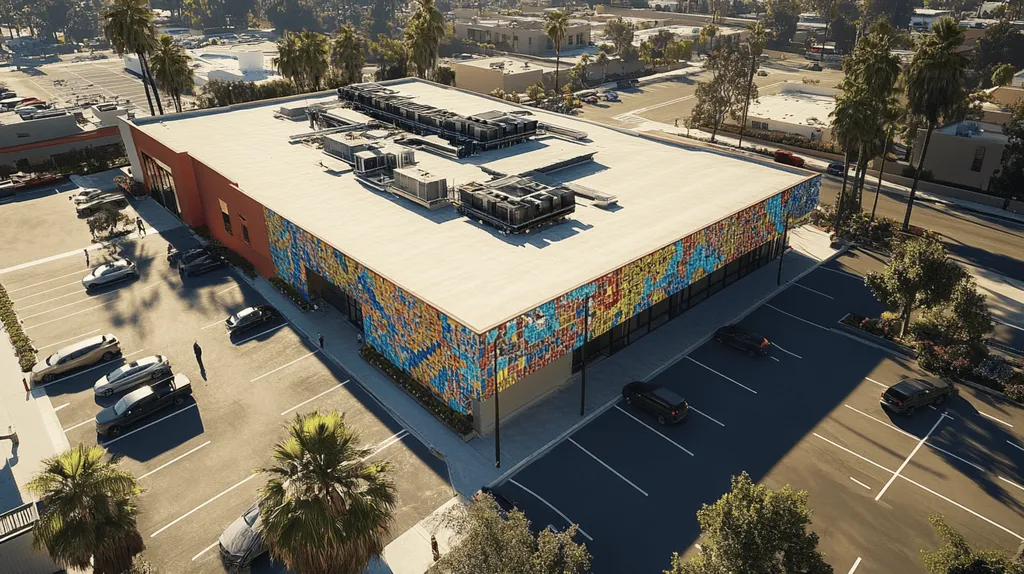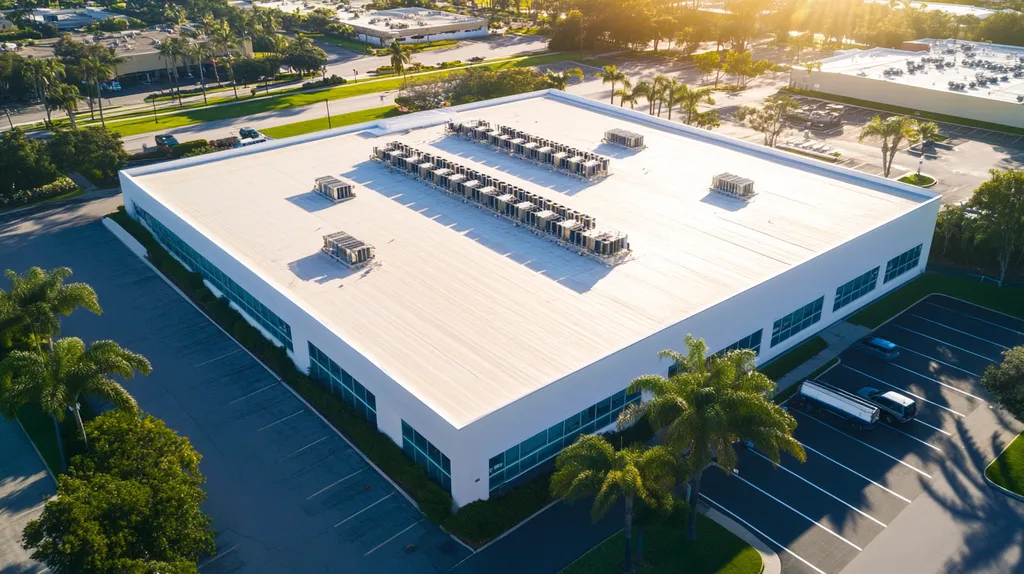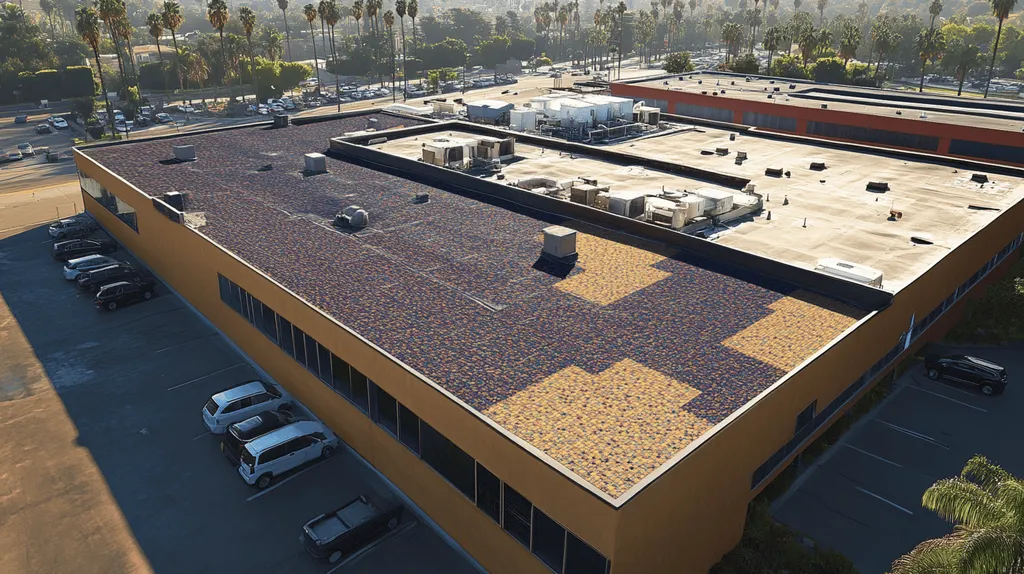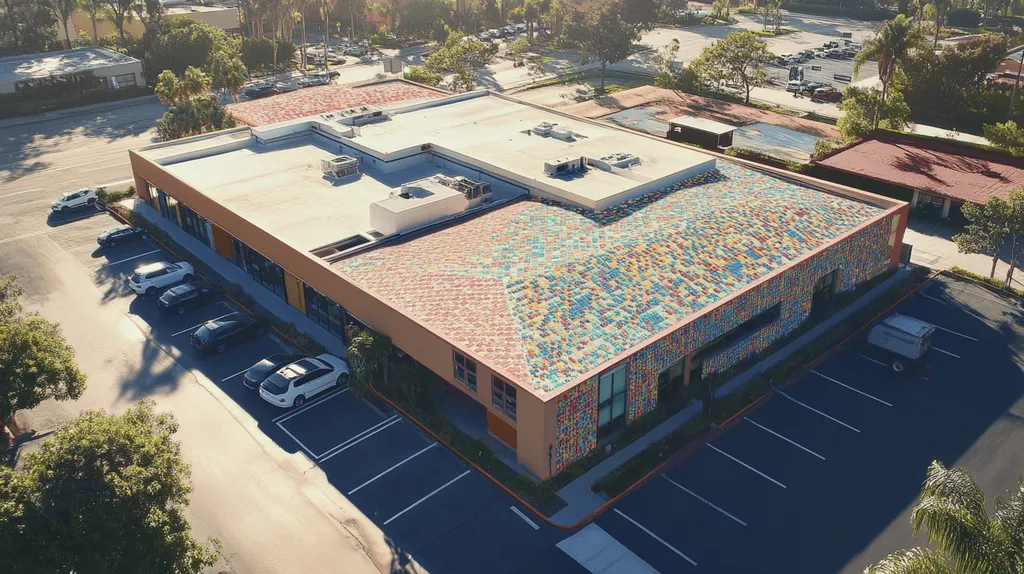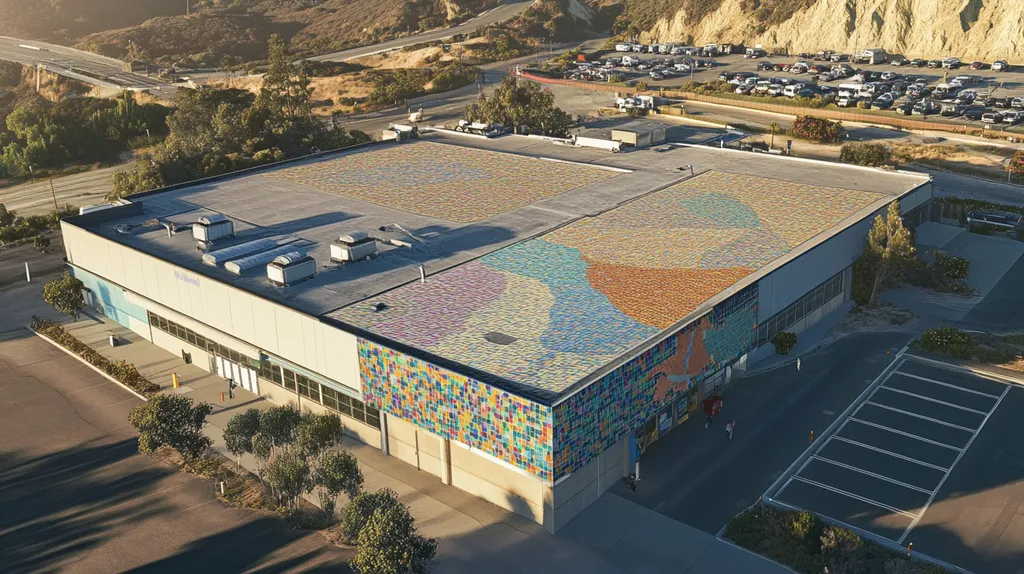Commercial roof warranties represent a critical yet often misunderstood aspect of facility management, with over 40% of warranty claims being denied due to compliance failures.
For facility managers overseeing commercial properties, understanding these warranties can mean the difference between a covered repair and an unexpected six-figure expense.
This comprehensive guide examines the essential components of commercial roof warranties, from performance factors and financial implications to compliance requirements and risk management strategies.
Through actionable checklists and practical insights, facility managers will learn to navigate warranty complexities while protecting their roofing investments and avoiding common pitfalls that lead to claim denials.
SECTION 1: PERFORMANCE FACTORS
Grasping the performance factors related to commercial roof warranties is essential for facility managers. Failing to comprehend these warranties can lead to unanticipated financial burdens. Statistics reveal that approximately 30% of commercial roofs fail prematurely due to inadequate installation practices. This section highlights key performance factors, including types of warranties, coverage specifics, and how installation practices influence warranty validity, creating a solid foundation for informed decision-making.
Types of Commercial Roof Warranties Explained
Commercial roof warranties generally divide into two main categories: material warranties and workmanship warranties. Material warranties cover defects in roofing materials, while workmanship warranties address problems arising from improper installation. Understanding these distinctions is crucial for facility managers, as each type provides different layers of protection for their investments.
Material warranties can range from 10 to 30 years, depending on the roofing system and the manufacturer. They typically protect against issues like leaks or degradation but often exclude damages resulting from poor installation or external events. Conversely, workmanship warranties usually cover shorter periods, often between 2 to 10 years.
It’s imperative for facility managers to scrutinize warranty documents closely to grasp limitations and exclusions. A common condition stipulates that repair claims must be submitted within a specific period after an issue arises. Overlooking these details can void the warranty under particular conditions.
Key Action Items
Assessing Material and Workmanship Coverage
Assessing coverage options for both materials and workmanship is essential to maximize warranty benefits. Facility managers should seek warranties that offer comprehensive coverage and clearly outline included and excluded items. Many warranties cover only specific damages, making it vital to understand these limitations.
For example, while a warranty might cover material defects, it may not include damage from weather-related events. This distinction can significantly affect the overall coverage. Additionally, it is important to ensure the warranty provider is reputable and financially stable, as this influences the likelihood of a successful claim.
Comparing warranty options can unveil hidden costs that might overshadow initial savings. Some lower-cost systems may offer limited coverage, which could leave facility managers vulnerable to higher repair expenses over time. Investing in a warranty with more extensive protections tends to be more cost-effective in the long run.
Key Action Items
Impact of Installation Practices on Warranty Validity
The validity of a commercial roofing warranty heavily depends on following the manufacturer’s installation guidelines. Failure to adhere to these specifications can void any existing warranties. This highlights the necessity of hiring skilled roofing contractors who have a proven record of quality work.
Common installation errors like improper fastener placement, inadequate sealing, and poor drainage management can lead to roof failures and challenge warranty claims. Facility managers must remain vigilant during the installation process to ensure compliance with warranty requirements.
Moreover, some warranties stipulate that only certified installers may perform the work, emphasizing the importance of selecting qualified personnel. Engaging an approved contractor not only helps to maintain warranty coverage but also ensures a higher standard of workmanship.
Key Action Items
SECTION 2: FINANCIAL CONSIDERATIONS
Making the right choice when it comes to commercial roofing warranties is not just about initial costs; it’s about protecting your long-term investment. The implications of warranty types can directly affect ongoing maintenance and unexpected repair costs. Facility managers must carefully navigate these warranty details to dodge future financial pitfalls and ensure a well-managed roofing asset.
Cost Implications of Different Warranty Types
Warranties come in various forms, each offering different levels of coverage. Some provide comprehensive protection that includes both materials and workmanship, while others focus solely on material defects. Full-system warranties often deliver greater peace of mind but typically require a higher upfront investment.
It’s crucial for property owners to look beyond the initial price tag of a warranty. While a cheaper material-only warranty might seem appealing, it can lead to higher repair and replacement costs over time due to limited coverage. Informed financial evaluations of warranty options are essential for aligning budgetary constraints with operational needs.
Adopting a Total Cost of Ownership (TCO) perspective can greatly enhance comparisons between warranties. This approach considers the roof’s expected lifespan, potential repair costs, and overall reliability, allowing facility managers to make strategic budgeting decisions today that safeguard their financial resources in the future.
Key Action Items
Understanding Prorated vs. No Dollar Limit Warranties
Warranties can generally be categorized into prorated and no dollar limit options. Prorated warranties decrease in coverage with time, meaning that as the roof ages, the property owner may need to shoulder a portion of repair costs. This can create unexpected financial burdens, particularly in the later years of a roof’s lifespan.
On the flip side, no dollar limit warranties cover the full repair or replacement costs regardless of the roof’s age. Although these warranty types often come at a higher price, they signify a dedication to long-term quality. Facility managers must carefully weigh which warranty type fits their financial strategy and risk tolerance.
Moreover, understanding the requirements for ongoing maintenance and inspections is vital. No dollar limit warranties may have more stringent compliance necessities; neglecting maintenance can void even the most robust warranty. Facility managers must prioritize an organized maintenance schedule to uphold warranty benefits.
Key Action Items
Budgeting for Inspections and Maintenance Obligations
Effective budgeting for roofing inspections and maintenance is critical for safeguarding warranty validity. Routine inspections can uncover minor issues before they escalate, saving considerable costs in future repairs. Conversely, neglecting maintenance can lead to severe damage and potentially void warranty protections.
Facility managers should plan inspections at least twice yearly, and immediately after severe weather events. This proactive budgeting protects the roof investment and ensures adherence to warranty requirements.
Additionally, a structured maintenance plan can enhance communication with contractors and manufacturers regarding ongoing coverage. By nurturing these professional relationships, facility managers might negotiate improved warranty terms that align with diligent property management.
Key Action Items
SECTION 3: COMPLIANCE REQUIREMENTS
The reliability of a commercial roof depends heavily on compliance with specific requirements. Compliance is not merely a box to check; it plays a vital role in long-term performance and warranty protection. Alarmingly, studies show that around 70% of warranty claims get denied due to non-compliance. Facility managers must familiarize themselves with the conditions set forth by manufacturers and contractors, the importance of mandatory inspections, and how roof modifications can complicate compliance. Understanding these elements is essential for protecting investments and ensuring optimal roof performance.
Manufacturer and Contractor Warranty Conditions
Commercial roof warranties often specify conditions dictated by manufacturers and contractors. These stipulations may include using approved materials, following prescribed installation methods, and adhering to industry standards. For instance, only certified contractors might be allowed to perform installations to maintain warranty coverage.
Not meeting these requirements can lead to the loss of warranty protection, resulting in significant repair costs. Facility managers are advised to thoroughly review warranty documentation to identify compliance criteria. Developing a checklist for each roofing project helps ensure that all key conditions are met from the start.
Maintaining open communication with roofing contractors and manufacturers during installation is also crucial. If any uncertainties arise, seeking clarification promptly can help avoid compliance issues that threaten warranty claims.
Key Action Items
Mandatory Inspections and Documentation Protocols
Mandatory inspections and proper documentation are essential for maintaining compliance with warranties. Most manufacturers require documented inspections at various stages of the roofing process to ensure quality and adherence to requirements. Inspections should occur before, during, and after installation.
Facility managers should establish a thorough documentation protocol that captures essential inspection reports, photographs, and any modifications made during installation. This thorough documentation acts as evidence of compliance and is crucial when filing warranty claims.
Additionally, scheduling routine post-installation inspections can help identify potential issues before they escalate. This proactive strategy not only ensures roof integrity but also reinforces warranty compliance, protecting the facility’s investment.
Key Action Items
Maintaining Warranty Compliance During Roof Modifications
Roof modifications, including repairs or upgrades, can complicate warranty compliance if not approached correctly. Many warranties specify particular procedures that must be followed for any alterations. For example, adding equipment or changing drainage systems may require specific installation methods to ensure compliance.
Before making any modifications, facility managers should consult warranty documentation. Not adhering to specified protocols can lead to complete warranty voidance. Effective communication with roofing contractors and manufacturers is key throughout this process.
To maintain compliance, facility managers should implement a modification review process that evaluates how changes impact the existing warranty. Engaging licensed professionals familiar with warranty requirements can further ensure compliance during any modifications.
Key Action Items
SECTION 4: RISK MANAGEMENT
Effective risk management is essential for maximizing the benefits of commercial roof warranties. Alarmingly, research shows that nearly 30% of roofing-related claims are denied due to a lack of understanding. Facility managers must proactively identify covered risks and recognize common pitfalls to avoid costly repair expenses. This section explores the risks covered by warranties, how to prevent voiding, and strategies to minimize the chances of claim denials.
Identifying Risks Covered by Roof Warranties
Knowing what risks are included in roof warranties is crucial for facility managers. Most warranties cover material defects and poor workmanship, ensuring that any installation flaws are addressed. Should the roof fail early due to these issues, the manufacturer or contractor may be responsible for repair costs.
Environmental damage, such as that from severe weather, sometimes falls under warranty coverage, depending on the specific terms. For example, hail damage could be included if the roofing system meets particular impact resistance ratings. Therefore, reviewing warranty documentation for these nuances is vital.
Additionally, some warranties protect against leaks, provided they are identified within a specified timeframe after installation. Understanding these key areas helps facility managers make informed decisions and manage risk effectively throughout the roof’s lifecycle. Regular inspections and thorough documentation of conditions can support future claims.
Key Action Items
Common Causes of Warranty Voids and How to Avoid Them
Warranty voids can occur easily when facility managers fail to stay vigilant. One major risk is improper maintenance, which many warranty agreements explicitly require. Neglecting tasks like cleaning gutters or delaying minor repairs can lead to losing coverage.
Using non-approved materials or contractors is another common pitfall that could void a warranty. For example, selecting cheaper materials not endorsed by the manufacturer can jeopardize warranty protections. Always align material choices with manufacturer specifications to avoid this issue.
Additions or modifications to the roof can also endanger warranties. Installing new equipment without proper consultation may lead to leaks or insufficient structural support that isn’t covered. To mitigate these risks, facility managers must prioritize maintenance schedules and ensure compliance with warranty terms.
Key Action Items
Strategies for Mitigating Warranty Claim Denials
A proactive approach is essential for mitigating warranty claim denials through effective strategies. First, keeping detailed records of all maintenance and inspections is crucial. Document service dates, work descriptions, and maintain photographic evidence to bolster claims.
Regular inspections by qualified professionals help catch potential issues early, ensuring compliance with warranty requirements. Reporting these inspections to the warranty provider strengthens future claims.
Training staff on warranty terms is equally important. Educated facility managers can avoid actions that might lead to voided warranties and make informed decisions accordingly. Maintaining open communication with the warranty provider during claims further enhances the likelihood of resolution.
Key Action Items
SECTION 5: OPERATIONAL PROCEDURES
Establishing effective operational procedures is crucial for safeguarding the integrity of commercial roofing systems and ensuring warranty compliance. Alarmingly, studies show that nearly 80% of roof failures stem from inadequate maintenance or improper repairs. By implementing proactive measures, facility managers can not only extend the roof’s lifespan but also prevent costly disputes regarding warranty claims. This section outlines critical operational protocols for scheduling preventative maintenance, adhering to approved repair guidelines, and maintaining comprehensive documentation.
Scheduling and Performing Preventative Maintenance
Regular preventative maintenance is essential for preserving commercial roofs and keeping warranties valid. Many warranties explicitly require routine inspections and maintenance as prerequisites for coverage. Facility managers should create a maintenance schedule that aligns with manufacturer recommendations and industry best practices.
This schedule should include bi-annual inspections to catch potential issues like membrane deterioration or water pooling. Key elements, including flashings and drainage systems, deserve thorough evaluation to ensure optimal performance.
All maintenance visits need to be documented. These records serve as evidence of compliance with warranty terms and can be instrumental in the event of a claim. Employing qualified contractors who are familiar with the specific roofing system is recommended during these maintenance tasks.
Key Action Items
Approved Repair and Contractor Guidelines
Following approved repair and contractor guidelines is critical for maintaining warranty coverage. Most warranties specify the materials and methods for repairs, and using non-approved techniques can void the warranty. Facility managers should rely on certified contractors skilled in their specific roofing systems.
These professionals must be well-versed in materials that conform to warranty requirements and installation protocols. Furthermore, facility managers should meticulously vet contractors for qualifications and past performance, often seeking recommendations from manufacturers.
Properly executed repairs not only extend the roof’s lifespan but must also strictly adhere to warranty guidelines to avoid future complications.
Key Action Items
Documentation and Recordkeeping for Warranty Claims
Effective documentation and detailed recordkeeping are vital for successfully navigating warranty claims. Inadequate records can result in claim delays or outright denials. Facility managers must document all maintenance and repair activities, including dates, findings, and actions taken.
These records should encompass invoices, contracts, and communication with contractors, providing a solid foundation for substantiating claims. In a dispute, this comprehensive record can demonstrate compliance with warranty criteria.
It is advisable to implement a centralized filing system, whether digital or paper-based, for easy access to these key documents. Regularly auditing records will further ensure accuracy and compliance with warranty terms.
Key Action Items
SECTION 5: OPERATIONAL PROCEDURES
Establishing effective operational procedures is vital for ensuring the longevity of commercial roofing systems and maintaining warranty compliance. Alarmingly, statistics indicate that as much as 80% of roof failures stem from inadequate maintenance or improper repairs. By implementing proactive strategies, facility managers can markedly extend their roofs’ lifespan and avoid costly disputes related to warranties. This section outlines essential protocols, including scheduling preventative maintenance, adhering to approved repair guidelines, and maintaining thorough documentation.
Scheduling and Performing Preventative Maintenance
Regular preventative maintenance is crucial for preserving the integrity of commercial roofs. Many warranties require routine inspections and maintenance to remain valid. Facility managers should set a maintenance schedule that aligns with manufacturer guidelines and industry best practices.
This schedule should feature semi-annual inspections to identify potential issues, such as membrane deterioration or pooling water. Critical components like flashings and drainage systems should also be thoroughly evaluated to ensure they are functioning properly.
Documentation of all maintenance visits is essential, as these records provide crucial proof of compliance with warranty terms, particularly during claims processes. Engaging qualified contractors familiar with the specific roofing system increases the effectiveness of maintenance tasks.
Key Action Items
Approved Repair and Contractor Guidelines
Adherence to approved repair and contractor guidelines is imperative for maintaining warranty coverage. Many roof warranties specify required materials and methods for repairs, and using non-approved techniques can void warranty protection. Facility managers should work exclusively with certified contractors who are well-versed in their specific roofing systems.
These professionals must be knowledgeable about materials that meet warranty requirements and installation protocols. Thoroughly vetting contractors for their qualifications and performance history can help ensure that repairs are executed correctly.
Executing repairs in line with warranty guidelines is essential, not only to extend the roofing system’s longevity but also to avoid future complications and claim denials.
Key Action Items
Documentation and Recordkeeping for Warranty Claims
Comprehensive documentation and systematic recordkeeping are crucial for effectively managing warranty claims. Failing to maintain accurate records can result in delays or outright denial of warranty coverage. Facility managers should meticulously document all maintenance and repair activities, ensuring to capture dates, findings, and actions taken.
Records must include invoices, contracts, and communications with contractors, providing a solid foundation for substantiating claims and demonstrating warranty compliance. Establishing a centralized filing system, whether digital or paper-based, ensures easy access to these important documents.
Conducting regular audits of this documentation not only verifies its accuracy but also ensures that maintenance activities comply with warranty terms. Diligent documentation supports claims and fosters a proactive approach to roof management that can save significant costs over time.
Key Action Items
The Bottom Line
With over 40% of commercial roof warranty claims being denied and the average repair costs exceeding $100,000, proper warranty management represents a critical responsibility for facility managers.
The financial stakes of warranty compliance have never been higher, as construction costs continue to rise by 8-12% annually.
Success requires a methodical approach across six key areas: performance validation, financial planning, compliance management, risk mitigation, operational procedures, and lifecycle planning.
By implementing comprehensive documentation protocols, maintaining strict compliance with manufacturer specifications, and following prescribed maintenance schedules, facility managers can effectively protect their roofing investments while ensuring valid warranty coverage.
The difference between proactive warranty management and reactive response often determines whether a facility faces a covered repair or a catastrophic expense.
FREQUENTLY ASKED QUESTIONS
Q. What performance factors impact commercial roof warranties?
A. Understanding performance factors is crucial for avoiding financial burdens related to roof failures. Key aspects include warranty type, coverage specifics, and adherence to installation practices. Poor installation can lead to warranty invalidation, so facility managers should prioritize quality workmanship.
Q. How do the costs of commercial roof warranties vary?
A. Warranty costs differ based on the type and level of coverage. Comprehensive warranties, covering both materials and workmanship, generally come with higher initial costs but can save money on future repairs. Facility managers should evaluate the Total Cost of Ownership for informed budgeting.
Q. What compliance requirements affect commercial roof warranties?
A. Compliance with warranty conditions is crucial for protecting investments and avoiding claim rejections. This includes using approved materials, adhering to installation guidelines, and completing necessary inspections. Managers must review warranty documentation to ensure all compliance criteria are met consistently.
Q. What risks do commercial roof warranties cover?
A. Most warranties cover risks like material defects and poor workmanship, offering repair cost protection. Warranty documentation often specifies additional covered risks, including environmental damage. Understanding these terms aids in managing risk and ensuring validation during the roof’s lifecycle.
Q. How can facility managers prevent warranty voids?
A. To prevent warranty voids, managers should establish regular maintenance schedules and adhere to approved materials and contractor guidelines. Documenting all maintenance and modifications is essential. Consulting manufacturers regarding any changes ensures compliance, safeguarding warranty coverage in the long run.
Q. What operational procedures should be in place for roofing systems?
A. Effective operational procedures include setting a preventative maintenance schedule, following repair guidelines, and maintaining thorough documentation. Regular inspections help identify issues early, while comprehensive records facilitate warranty claims. Collaborating with qualified contractors enhances the maintenance process and ensures compliance.
Q. How can I choose the best warranty for my commercial roof?
A. Evaluating warranty options involves looking at coverage specifics, duration, and provider stability. Prioritize warranties with comprehensive protection and favorable terms for your commercial roof type. Conducting thorough research and seeking advice from industry professionals can help make informed decisions.

